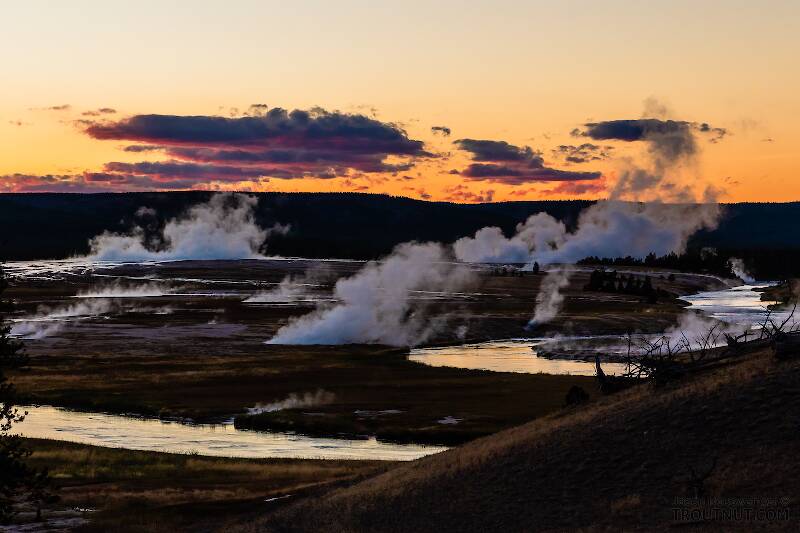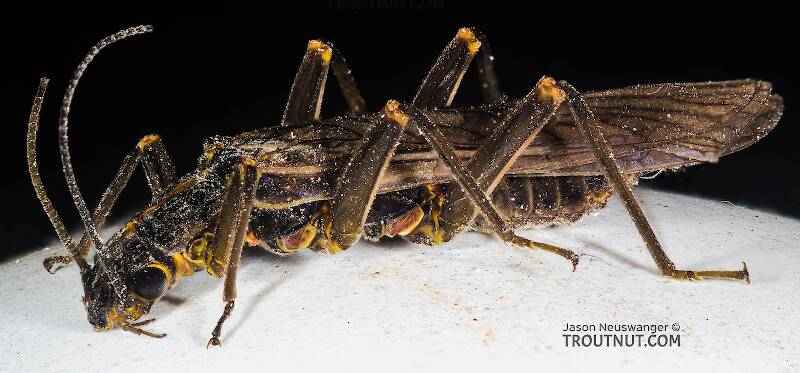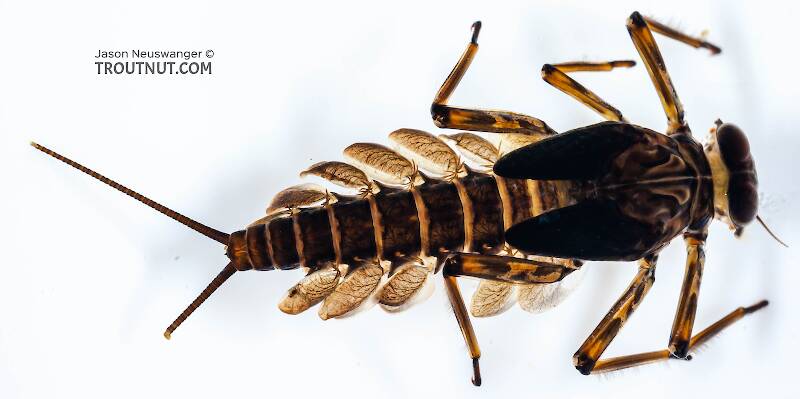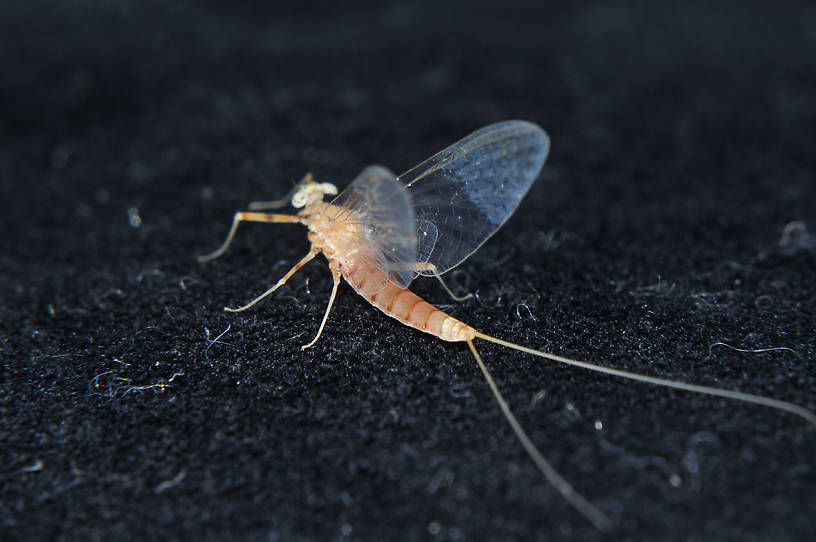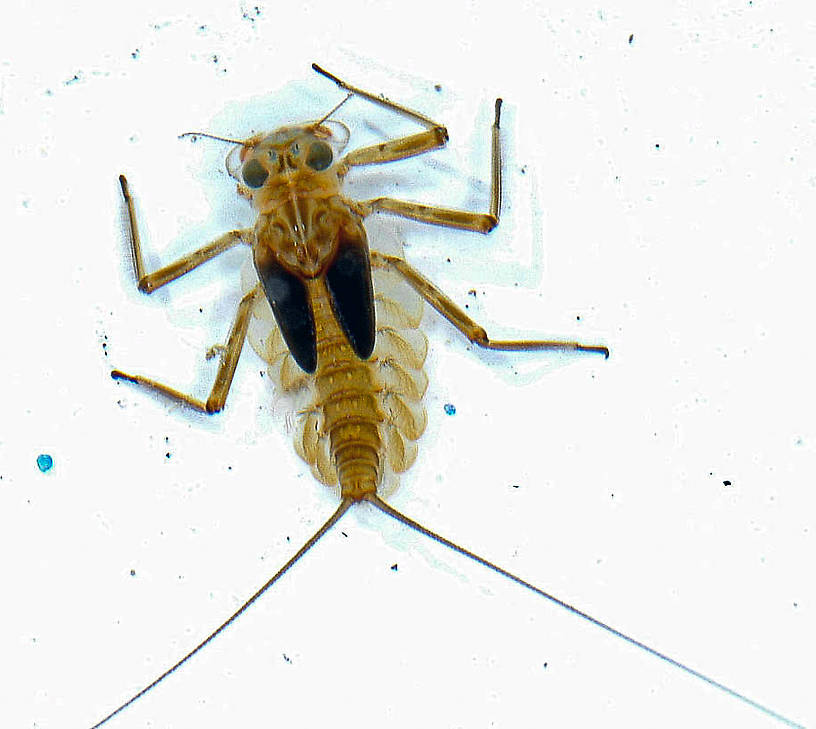
Hex Mayflies
Hexagenia limbata
The famous nocturnal Hex hatch of the Midwest (and a few other lucky locations) stirs to the surface mythically large brown trout that only touch streamers for the rest of the year.
Featured on the forum

Troutnut is a project started in 2003 by salmonid ecologist Jason "Troutnut" Neuswanger to help anglers and
fly tyers unabashedly embrace the entomological side of the sport. Learn more about Troutnut or
support the project for an enhanced experience here.
Quill Gordons
This name primarily describes the important Eastern hatch Epeorus pleuralis. It was the first American trout stream hatch described by anglers, and it is named for the fly pattern created by 19th century fly fishing legend Theodore Gordon to imitate it.
Like most common names,"Quill Gordon" can refer to more than one taxon. They're previewed below, along with 8 specimens. For more detail click through to the scientific names.
Mayfly Species Epeorus pleuralis
These are pretty much always called Quill Gordons.
This is the first really good dry-fly opportunity of the season for most Eastern anglers. They are large mayflies and they have good points of vulnerability both underwater and on the surface.
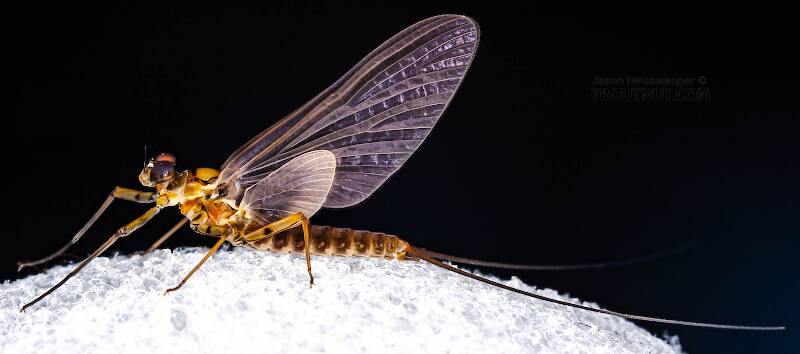
I kept this specimen after photographing it and it molted into a spinner in perfect condition, which I photographed here.
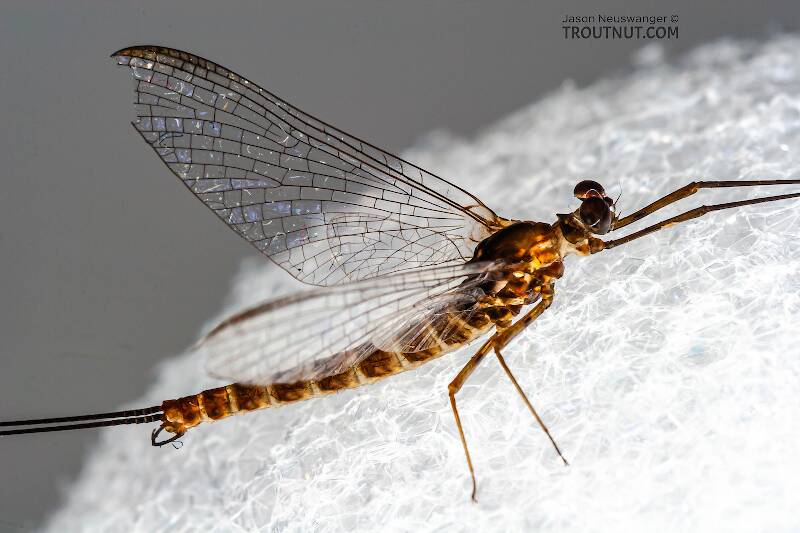
I spent most of the day looking for Epeorus pluralis duns or spinners without any luck on the major Catskill rivers. Finally in the evening I arrived at a small stream somebody had recommended, and when I got out of the car I was happy to find that I had parked in the middle of a cloud of male spinners.
See 5 more specimens...
Mayfly Species Rhithrogena futilis
These are very rarely called Quill Gordons.
This uncommon and slightly larger species hatches earlier than Rhithrogena hageni, but otherwise is virtually indistinguishable.
Mayfly Species Epeorus longimanus
These are very rarely called Quill Gordons.
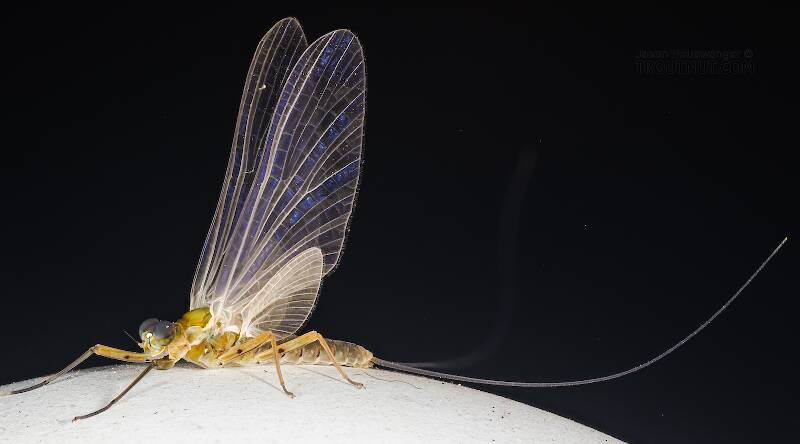
Identification of this one was as follows. Body 9 mm, wing 11 mm.
Both Epeorus albertae and Epeorus dulciana should have a conspicuously darkened humeral crossvein in the forewing. This one doesn't.
The foretarsal claws are dissimilar (one sharp, one blunt), which also rules out the Epeorus albertae group.
The dark macula on the forefemora rules out Epeorus deceptivus, which is also supposed to be a little bit smaller.
Both Epeorus grandis and Epeorus permagnus should be much, much larger.
Of the species known to be present in Washington, this leaves only Epeorus longimanus, which is exactly the right size. The key to male spinners in Traver (1935) describes distinctive markings that are visible (although more faintly) in this dun: “Black posterior margins of tergites do not extend laterally to pleural fold, but an oblique black line form this margin cuts across poster-lateral triangle to pleural fold.”
Both Epeorus albertae and Epeorus dulciana should have a conspicuously darkened humeral crossvein in the forewing. This one doesn't.
The foretarsal claws are dissimilar (one sharp, one blunt), which also rules out the Epeorus albertae group.
The dark macula on the forefemora rules out Epeorus deceptivus, which is also supposed to be a little bit smaller.
Both Epeorus grandis and Epeorus permagnus should be much, much larger.
Of the species known to be present in Washington, this leaves only Epeorus longimanus, which is exactly the right size. The key to male spinners in Traver (1935) describes distinctive markings that are visible (although more faintly) in this dun: “Black posterior margins of tergites do not extend laterally to pleural fold, but an oblique black line form this margin cuts across poster-lateral triangle to pleural fold.”
See 2 more specimens...
Mayfly Species Cinygmula subaequalis
These are very rarely called Quill Gordons.
This is the only Eastern species of Cinygmula. It may produce fishable hatches in places but it is not a generally important mayfly.
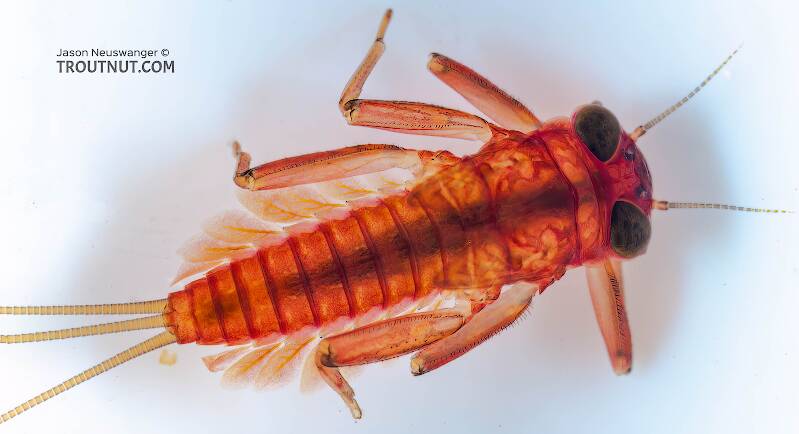
I had heard reports of a bright red heptageniid nymph before but never seen one until I found this early instar specimen in a very high water quality small stream in the Catskills.
See 1 more specimen...
Mayfly Species Rhithrogena undulata
These are very rarely called Quill Gordons.
This is one of the two most common species of Rhithrogena.
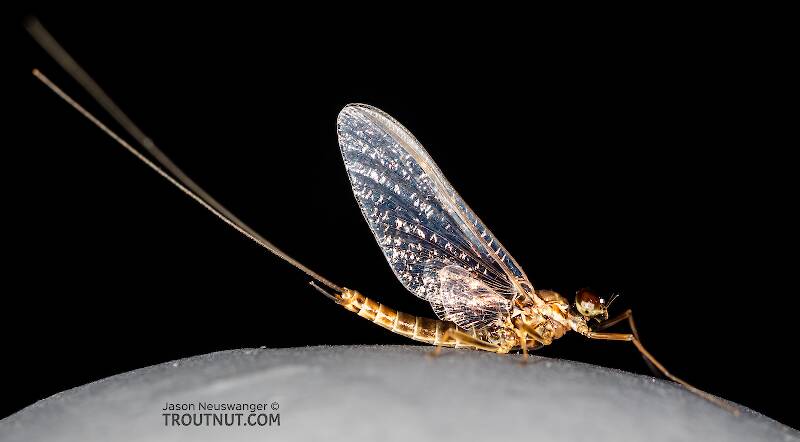
This male was collected at the same time as this female and is likely the same species.
It keys pretty clearly to Rhithrogena undulata using the key in Traver 1935, although the size is larger than expected for that species in that source.
It keys pretty clearly to Rhithrogena undulata using the key in Traver 1935, although the size is larger than expected for that species in that source.
See 1 more specimen...

